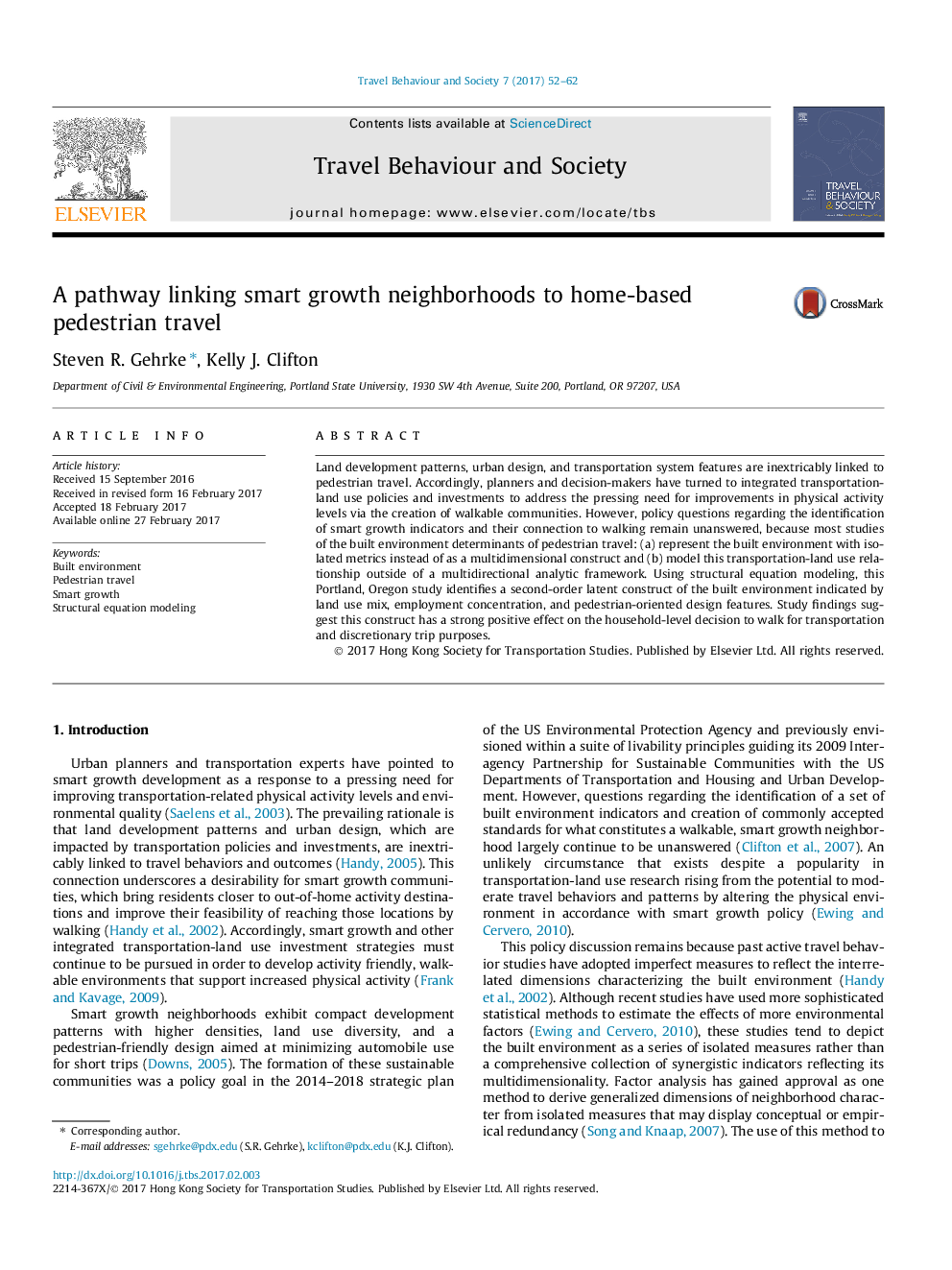| Article ID | Journal | Published Year | Pages | File Type |
|---|---|---|---|---|
| 4762111 | Travel Behaviour and Society | 2017 | 11 Pages |
Abstract
Land development patterns, urban design, and transportation system features are inextricably linked to pedestrian travel. Accordingly, planners and decision-makers have turned to integrated transportation-land use policies and investments to address the pressing need for improvements in physical activity levels via the creation of walkable communities. However, policy questions regarding the identification of smart growth indicators and their connection to walking remain unanswered, because most studies of the built environment determinants of pedestrian travel: (a) represent the built environment with isolated metrics instead of as a multidimensional construct and (b) model this transportation-land use relationship outside of a multidirectional analytic framework. Using structural equation modeling, this Portland, Oregon study identifies a second-order latent construct of the built environment indicated by land use mix, employment concentration, and pedestrian-oriented design features. Study findings suggest this construct has a strong positive effect on the household-level decision to walk for transportation and discretionary trip purposes.
Related Topics
Life Sciences
Environmental Science
Management, Monitoring, Policy and Law
Authors
Steven R. Gehrke, Kelly J. Clifton,
